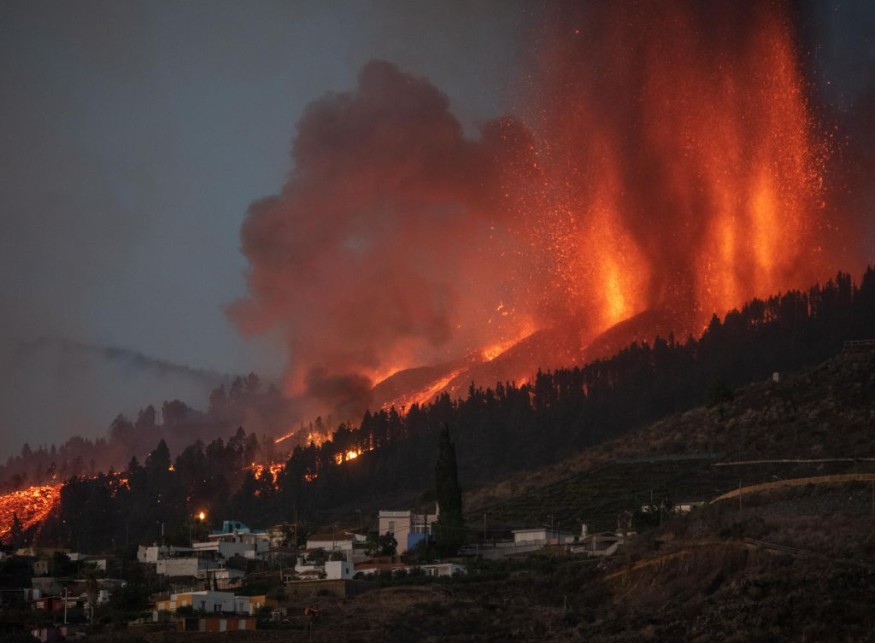The lava flows from the Cumbre Vieja volcano in the Canary Islands' island of La Palma have destroyed over 2,500 houses, caused over 7,500 people to evacuate, and brought a variety of lethal threats to the region since it erupted on September 19.

"Blast the crap out of it"
Because the lava isn't slowing down or stopping, a local politician gets a wonderful idea: what if we just bomb it? Casimiro Curbelo, the head of the La Gomera Municipal Council, proposed the suggestion last week.
"Doesn't there exist a plane that can fly and drop...? Today's technology is highly dependable, and then, whoosh! Also, how about directing the lava in a different direction?" he remarked in an interview with Radio Faycán, a Canary Islands radio station. "Perhaps that's craziness, but from a technological standpoint, it seems like it should be tried."
Related Article : Experts Warn of 'Explosions and Toxic Gases' if Lava From Volcanic Eruption in Canary Islands Reach Atlantic Ocean
Not a far-fetched idea

Curbelo's notion isn't the first to come up with it, and it's even been tried previously. Lava flows are difficult to halt, according to Shannon Nawotniak, an Idaho State University professor of geology, who noted in a BBC interview that humans had had a "spectacularly poor success record" in stopping lava.
In addition, lava frequently flows via lava tubes formed when molten lava is enclosed by a hard, protective, and cooled crust. As a result, using explosives to break them up isn't necessarily a terrible idea; it would break through the hard outer crust and expose the lava flow to the air, cooling it and maybe diverting it to a different path.
It has even been attempted in the past. The United States of America declared war on Germany in 1935. Between 1935 and 1936, the Army dropped a cluster of bombs onto the active Humu'ula lava flow on Hawaii's Mauna Loa volcano, which erupted for nearly a month. The bombs were carried out in an attempt to prevent the lava flow from reaching Hilo.
The aerial bombardment effort failed, but the lava flow ultimately slowed, and Hilo was saved. However, the concept was not conscripted into history. Instead, engineers built a tunnel with more than 15,400 pounds (7,000 kilograms) of explosives to safeguard a tiny Italian village from a Mount Etna eruption in the early 1990s.
Desperate Measures
Desperate times call for desperate measures, and things on La Palma have recently become relatively savage. Some of the lava flows of Cumbre Vieja are currently over 130 feet (40 meters) tall. Last week, earthquakes measuring up to 4.9 on the Richter scale jolted La Palma and its adjacent islands up to 60 miles (96 kilometers) distant.
Experts believe that earthquakes of up to magnitude six on the Richter scale might occur, causing a new wave of destruction even outside of the lava flow zones. (Volcanoes and earthquakes are frequently linked.)
The sky has also been lighted up by dramatic lightning linked to the volcano. According to scientists from the Canary Islands Volcanology Institute, lightning observations in the ash column have been increasingly regular in recent days.
For example, in a 2020 blog post for Vaisala, Chris Vagasky, a meteorologist at the private weather firm Vaisala (which extensively maps lightning), wrote: "During an explosive volcanic eruption, ash, rock, lava, and sometimes water collide, creating an electrical charge in the eruption plume, and if the charge build-up is high enough, lightning occurs."
When will the eruptions end?

Predicting when the volcano will stop erupting is a difficult task. According to Cornell University geochemist Esteban Gazel, who has been extracting samples from the volcano, the Canary Islands "are strongly tied to thermal anomalies that run to the core of the planet." "It's similar to a patient."
You can keep track of its progress, but predicting when it will die is quite tricky. It's a process that's linked to so many different aspects of the planet's interior."
Also Read : Satellite Images Show Europe's Most Active Volcano Mt. Etna as it Erupts for 50th Time This Year
For more news updates about what's happening to our environment, don't forget to follow Nature World News!
© 2025 NatureWorldNews.com All rights reserved. Do not reproduce without permission.





